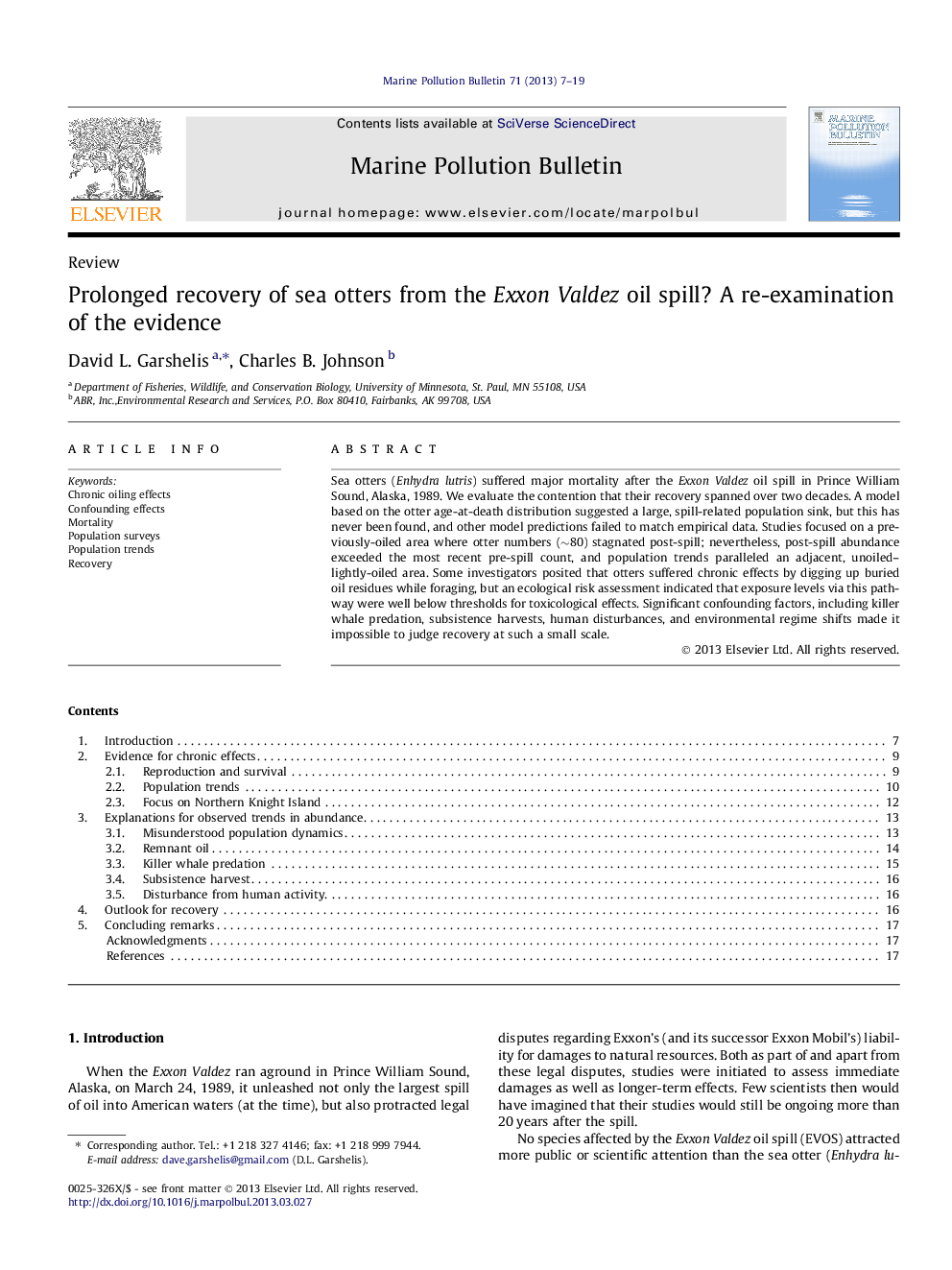| Article ID | Journal | Published Year | Pages | File Type |
|---|---|---|---|---|
| 6358953 | Marine Pollution Bulletin | 2013 | 13 Pages |
Abstract
Sea otters (Enhydra lutris) suffered major mortality after the Exxon Valdez oil spill in Prince William Sound, Alaska, 1989. We evaluate the contention that their recovery spanned over two decades. A model based on the otter age-at-death distribution suggested a large, spill-related population sink, but this has never been found, and other model predictions failed to match empirical data. Studies focused on a previously-oiled area where otter numbers (â¼80) stagnated post-spill; nevertheless, post-spill abundance exceeded the most recent pre-spill count, and population trends paralleled an adjacent, unoiled-lightly-oiled area. Some investigators posited that otters suffered chronic effects by digging up buried oil residues while foraging, but an ecological risk assessment indicated that exposure levels via this pathway were well below thresholds for toxicological effects. Significant confounding factors, including killer whale predation, subsistence harvests, human disturbances, and environmental regime shifts made it impossible to judge recovery at such a small scale.
Related Topics
Physical Sciences and Engineering
Earth and Planetary Sciences
Oceanography
Authors
David L. Garshelis, Charles B. Johnson,
